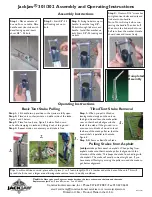
The word MIDI is an abbreviation for Musical Instrument Digital Interface.
The MIDI language was originally designed by NASA for scientific purposes,
and it is only since 1983 that it has been successfully applied to musical
instruments.
It is basically a code which can convert any parameter of real musical
performance into a series of messages which can then be transmitted, by
means of a special interface and cables, to an external device equipped with a
MIDI interface which is able to decode the messages and reconvert them into
musical sounds.
The MIDI code is now universally used by all musical instrument
manufacturers as it minimizes incompatibility between different brands and
models, enabling them to communicate without problems. Communication
takes place through a maximum of 16 separate transmit/receive channels
(similar in principle to TV channels) allowing for simultaneous control of at
least 16 different instrumental parts, each with completely independent
pitch, dynamics, volume, etc.
Three types of connection are used for data communication:
MIDI IN: receives messages from an external device which generates them.
MIDI OUT: transmits messages generated by the device on which it is
installed.
MIDI THRU: re-transmits messages received at MIDI IN without altering them
in any way.
The Standard MIDI File is an encoding format for MIDI data and is not affected
by the type of data contained or the type of sound source. It is basically a way
of ensuring compatibility between recordings made by different devices
(such as sequencers, computers, etc.).
There are two types of MIDI FILE: 0 and 1.
Format 0 is also known as the single-track format because it stores the MIDI
data on a single track containing all of the information about the recorded
instrumental parts. The parts are only separated by the MIDI channel through
which they are reproduced.
Format 1 is also known as the multi-track format because it maintains the
division of the instrumental parts on separate tracks when storing the
messages (if division has been used at the recording stage).
1.3MIDI Code
1.4 Standard MIDI File
INTRODUCTION
MIDI can separately control
up to 16 independent sound sources.
A MIDI connector.
MIDI OUT
1
4
9
10
11
12
13
14
15
16
5
6
7
8
2
3
MIDI IN
MIDI THRU
MIDI IN
Summary of Contents for RD-70
Page 8: ......
Page 9: ...INTRODUCTION 1 ...
Page 12: ......
Page 13: ...PLAYBACK 2 ...
Page 18: ......
Page 19: ...PROGRAMMING 3 ...
Page 23: ...RECORDING 4 ...
Page 26: ...FLOPPY DISKS 5 ...
Page 31: ...MIDI FUNCTIONS 6 ...
Page 35: ...MESSAGGES 7 ...












































